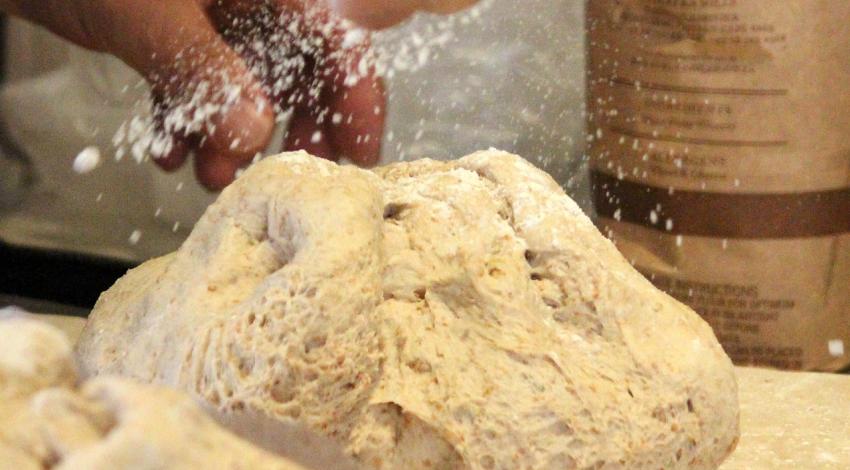Pizza dough, easy to prepare
dough

1 Introduction
A good pizza starts with a well-made dough. While countless recipes claim to produce the perfect crust, the fundamental principles are quite simple: flour, water, yeast, and time. Homemade dough offers far more flavor and texture than store-bought alternatives and provides the satisfaction of crafting a meal from scratch.
This guide explains the history of pizza dough, offers tips on choosing ingredients, and walks you through the steps of mixing, kneading, and proofing. With a little patience, you’ll be shaping pies like a pro.
2 Historical Background
Pizza as we know it developed in Naples, Italy, where bakers topped flatbreads with tomatoes and local cheese. The dough itself, however, traces back centuries earlier to simple yeast-leavened breads baked in communal ovens. As Italian immigrants carried their culinary traditions abroad in the late 19th and early 20th centuries, pizza dough techniques spread around the globe.
Today, pizzerias customize their dough to achieve specific textures—from thin, crisp crusts to thick, airy Sicilian-style bases. Understanding the basics of hydration, fermentation, and gluten development allows home bakers to replicate these results.
3 Utensils Needed
- Large mixing bowl
- Measuring cups and spoons
- Clean countertop or wooden board
- Dough scraper or sturdy spatula
- Rolling pin or hands for shaping
A kitchen scale is helpful for accuracy, but volumetric measurements work in a pinch. Having a dough scraper makes cleanup and kneading easier.
4 Ingredient Overview
- 1000 g all-purpose or bread flour
- 5 dl lukewarm water
- 50 g fresh yeast or 14 g active dry yeast
- 3 tablespoons olive oil
- 2 tablespoons sugar
- 1 tablespoon coarse salt
Bread flour yields a chewier crust due to its higher protein content, while all-purpose flour results in a lighter bite. Adjust water slightly if your environment is very humid or dry.
5 Step-by-Step Instructions
- Activate the Yeast: Dissolve the yeast in the lukewarm water along with one tablespoon of sugar. Let it sit until frothy, about five minutes.
- Mix the Dough: In a large bowl, combine the flour, remaining sugar, and salt. Pour in the yeast mixture and olive oil, stirring until a shaggy dough forms.
- Knead Thoroughly: Turn the dough onto a floured surface and knead for about ten minutes, adding flour only if it sticks excessively. Proper kneading develops gluten, creating a stretchy dough that traps gas bubbles during rising.
- First Rise: Lightly oil a clean bowl, place the dough inside, and cover with cling wrap or a damp cloth. Let it rise at room temperature until doubled in size—usually two to three hours depending on ambient warmth.
- Punch Down and Fold: Deflate the dough gently, then fold it over itself a few times to redistribute yeast and strengthen gluten structure.
- Second Rise: Allow the dough to rise again until doubled, about one hour. This stage enhances flavor and texture.
- Shape and Bake: Divide the dough into portions and roll each piece thinly. Preheat your oven with a baking stone or steel to its highest setting. Add sauce and toppings, then bake until the crust is golden and crisp.
6 Pros and Cons of Homemade Pizza Dough
Pros: Freshly made dough has superior flavor and texture. You can control the thickness and hydration level to match your preferred style. The process is relatively inexpensive and allows for experimentation with whole-grain flours or added herbs.
Cons: It requires planning ahead because yeast dough needs time to rise. Kneading can be messy if you are not accustomed to working with sticky dough. Store-bought dough offers convenience, but often lacks the nuanced flavor developed through slow fermentation.
7 Tips for Success
- Use lukewarm water to activate yeast without killing it.
- Knead until the dough feels smooth and elastic.
- For extra flavor, refrigerate the dough overnight after the first rise; this slow fermentation builds complexity.
- Dust your baking surface with semolina or cornmeal to prevent sticking.
8 Conclusion
Learning to prepare pizza dough opens the door to endless topping combinations and lets you enjoy pizzeria-quality pies at home. The key is patience—give the yeast time to work, handle the dough gently, and bake at a high temperature. Once mastered, this basic recipe can be adapted to create everything from thin-crust Margheritas to thick, focaccia-like slices.